Darkness Devours Dumb Lugs and Dirty Dames!
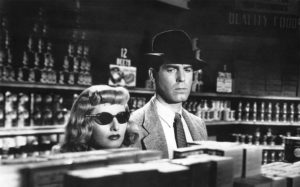
Forget “Noir-vember!” Just when any film website in its right mind would be presenting a bright and sunny “movies for summer” piece, ZekeFilm has inexplicably opted to swing into utter darkness. But, as topsy-turvy and alienating as the real world has been lately, this unexpected swerve into classic Film Noir can only make some kind of perfect sense. Typically inexpensive and unglamorous, there is nevertheless a fatalistic sex appeal baked into so many of these stylish outings.
Though one of the most common aspects of classic Noir is its probing, prodding, and even deconstruction of the fragile post-World War II male psyche, the form bears exceptions to almost every one of its apparent rules. Not all Films Noir are moody black and white big city detective stories with punchy dialogue. There are in fact a handful of glossy color Noirs, the most well-known being John M. Stahl’s 1945 daylit and lake-set Leave Her to Heaven, which has at its center one of the coldest moments of silence in film history. As for detectives, they factor into shockingly few Films Noir proper. Mostly, we find ordinary unsuspecting protagonists caught in a downward spiral of lust, crime, and/or just plain bad luck. The world of Noir can be oppressive and brutal- but it’s not always that way.
So, with all of that in mind, several contributors of ZekeFilm have opted to catch up with a classic Noir title which, for whatever reason, has eluded them until now. One Noir construct we stuck with is the widely accepted timetable of the Hollywood form, which officially begins in 1941 with John Huston’s The Maltese Falcon and concludes in 1958 with Orson Welles’s Touch of Evil. As it turns out, most of our classic Noir Film admissions hail from the earlier side of this range. Yet, in the spirit of Film Noir’s slippery formal tenacity, we’ve included one wiseguy’s submission that falls well outside of Hollywood and the established “classic” timetable. Think of Paul Hibbard’s short take on Seijun Suzuki’s 1967 Branded to Kill as a kind of bonus, the dangling enticement to check back for a future detour into the self-aware subsequent realm of Neo-noir.
Here now, presented in chronological order, are some very different takes on our Film Noir Film Admissions!
– Jim Tudor
The Maltese Falcon
DIRECTED BY JOHN HUSTON/1941
by Erik Yates
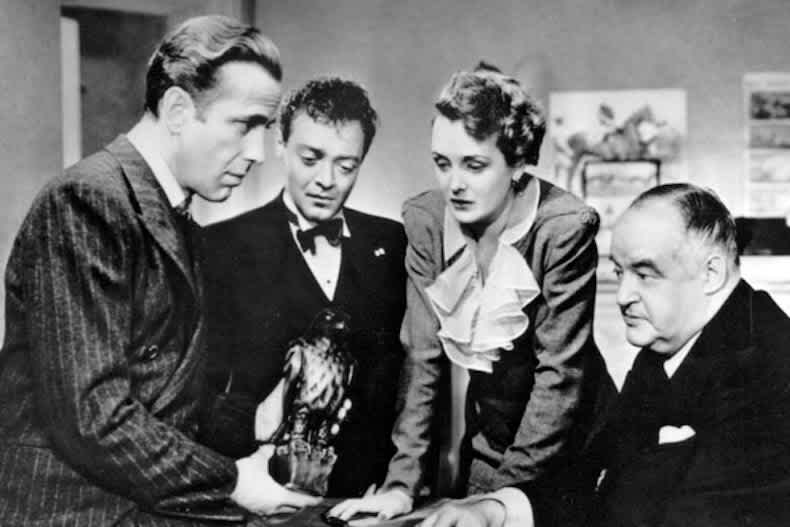
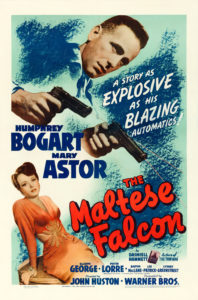
One of the biggest holes I had in the watching of Films Noir was John Huston’s 1941 film, The Maltese Falcon, based on the novel by Dashiell Hammett. It is my film admission that until this month, I had never seen it. Starring Humphrey Bogart, Mary Astor, Peter Lorre, Lee Patrick, and Sydney Greenstreet, this film shows the power of good writing that existed back in the early 1940s. While much is left to be desired in how Bogart treats the women around him, some of this treatment plays to the cynical attitudes that characters in Film Noir tended to display during the 1940s and 1950s. Some of it is just a reflection of the “way things existed” during this time frame, and that really has no defense. The writing, however, is able to build a tightly constructed story that is both complex in its design, yet simple enough to follow, even with a lot of moving parts in the beginning of the film. Here, The Maltese Falcon’s strength is that it simply “shows” and doesn’t spend a lot of time trying to “tell” you everything. John Huston trusted the audience to follow the narrative, and the film’s pacing is given a huge boost as a result.
The entire plot of the film is built around just a few main locations in San Francisco. Most of the suspense of the plot comes to Bogart, who plays Private Detective Sam Spade whose partner is gunned down while following their new client, Brigid O’Shaughnessy (Astor), in rapid succession at his private agency’s office. Shortly after, Spade is being looked at as a person of interest in the death of his partner, and the death of the man whom their client warned them about. Quickly, Spade is being visited by Joel Cairo (Lorre) who represents “The Fatman”, Kasper Gutman (Greenstreet). It seems everyone is wrapped up in trying to locate and obtain the priceless Maltese Falcon, a jewel encrusted token that was sent by a group from the Island of Malta to the King of Spain in the 1500’s but never arrived after its ship was raided. Will Spade and his loyal assistant Effie Perine (Patrick) be able to stay one step ahead of the group that is swarming around him, who are also responsible for his partner’s death, or will he take the fall as the police close in?
The Maltese Falcon is certainly a mainstream film in the Noir niche, with names like John Huston, Peter Lorre, and Humphrey Bogart attached to it. Surprisingly, this was Huston’s debut film, which is a great way to kick off a career that would include such classics as The Treasure of the Sierra Madre, The African Queen, Moby Dick, Annie, and Prizzi’s Honor. I am happy to say that I have finally crossed this classic film off my list of “should have seen, but never have” films. It is well written, entertaining, and even sets the stage for later Film Noir archetypes, like the private eye. The film’s macguffin of the jeweled bird can also be seen as a film influence in other films, most notably the Indiana Jones films from George Lucas and Steven Spielberg. So, if you have some time, check out the classic film, The Maltese Falcon, in its 80th anniversary year.
Detour
DIRECTED BY EDGAR G. ULMER/1945
by Robert Hornak
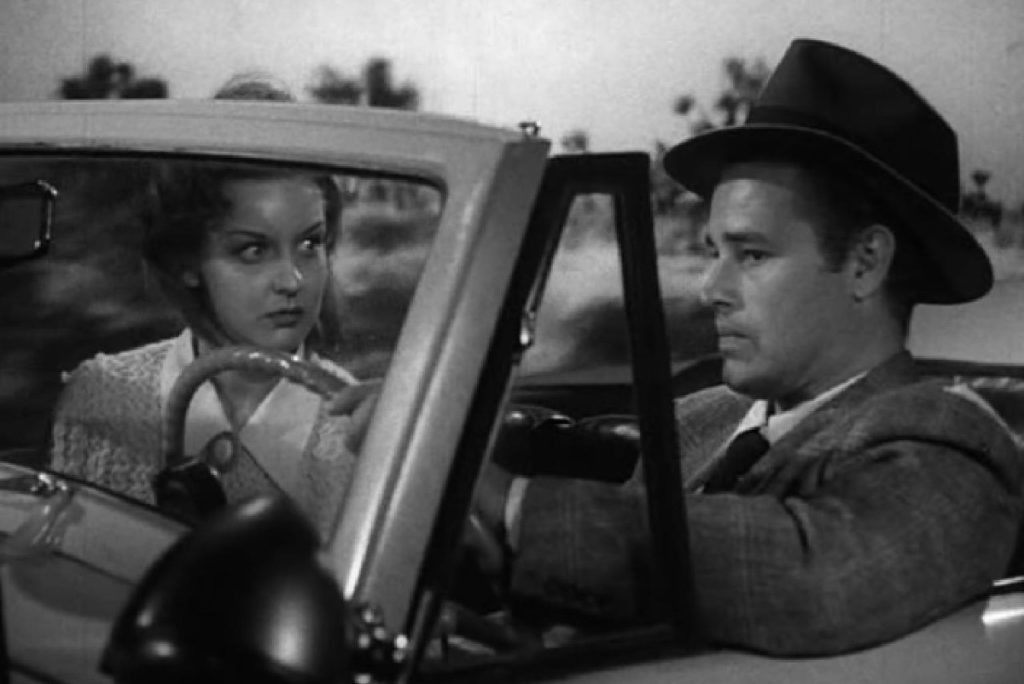
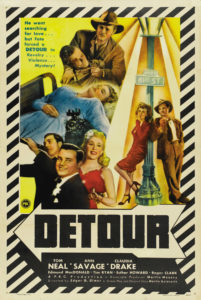
Of course I’ve heard the title a million times, so often I assumed I’d seen it. Nope. So I dove in and got myself all dirty with what must be the Rosetta Stone of Film Noir – the utterly distilled paint-by-numbers for every down-and-gross genre title that followed in its dour path to own-petarded doom. Al Roberts (Tom Neal) stumbles into a diner in nowhere Arizona, makes with the narration and a flashback to the series of colossal blunders that stranded him from his fiancée in California and threw him into an existential squeeze so tight the only place to finally breathe – in the film’s final moments – is the back seat of a Hays-issued police wagon. Up at the top, Roberts hitches a ride with Charlie Haskell (Edmund MacDonald), who dies en route, and, fearing blame, he dumps the body, steals the man’s identity, and… picks up a damsel in distress whose turnabout to sneering femme fatale is one of the great predictable-but- horrifying morphs in film history. Vera (the appropriately named Ann Savage, spouting beauts like “Wha’dja do, kiss him with a wrench?”), soon has the poor slob in the vise of her own sociopathic grab – for Haskell’s dough, for Haskell’s car, on up to Haskell’s looming windfall of an inheritance. A long stretch of the picture is her forcing Roberts to wait with her in morbid suspense for Haskell’s sick pop to kick off so they can swoop in and swindle the estranged Haskells for all their worth. Thus is our perpetually worried hero-patsy swept along by the roaring torrent of Vera’s insatiable greed, till death do them part.
There’s an ad hoc quality to almost every aspect of the movie. I don’t want to say cheap – too pejorative. Because the parts might well be scraped up off a borrowed soundstage, but the put-together movie is a golden mixture of everything that was Noir up to that point and much that Noir would be defined by after it. It’s got a jumpy gut, the kind that comes from too little sleep, too much coffee, and no shower since the state line. There’s an energy in the awkward cutting that – intended or not – matches the face of the man telling the story through his bitter memory. It doesn’t matter that there’s a shot, clearly flipped, inside a car so that it’s “headed west toward California”, putting the steering wheel on the wrong side of the dash: it’s a story that doesn’t care what tricks it has to use to get you there. And it doesn’t care that the femme fatale is so shrill she’s a shrieking caricature – it somehow knows that this kind of shrill gets under your nerves like an eyeball scratch till you’re alongside the sap, slapping yourself for letting him pick her up in the first place. You’re with him getting gut-punched by bitter regret – for the car you hitched a ride from, for the ride you gave once you had the car to yourself, and for being too stupid to trust your own simple plan. By the end, circumstance has you squeezed between two coasts, off limits to both, a walking ghost in the hazy middle, coughing up voiceovers into the void, bemoaning fate, and the fact that wherever you go, it “sticks out a foot to trip ya.”
There’s not an inch to spare inside this one-hour, eight-minute bullet, packed so tight with flips and turns all juiced by machine-gun dialogue, an engine fueled by desperation and cigarette hits. It’s the kind of movie that makes you feel okay for draping it in that kind of Hammett-fisted patois – the ambiance is so thick with expected conventions, so nervy despite its shanty, cardboard frame, so pummeled by a set of cliches it seems to be inventing as it goes… It’s so lived-in it has to be a masterpiece. So corkscrew in its twists, it’s like some cynical, O. Henry wind-up toy dragged through the gutter. It might be the perfect accident.
Kiss of Death
DIRECTED BY HENRY HATHAWAY/1947
by Taylor Blake

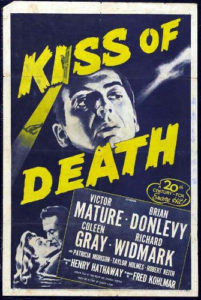
Nick Bianco’s life fell apart all because he didn’t want to disappoint his kids for Christmas. When a Christmas Eve jewelry heist goes sour, Nick (Victor Mature) gets pinched and refuses to name names. But when he realizes his family is suffering while he’s in prison, he decides they’re more important than his dignity. He squeals on his fellow cronies in exchange for a shorter sentence and then goes undercover for the Assistant D.A. (Brian Donlevy). Now he’s not an enemy of the law—he’s an enemy of New York’s underworld.
While I admit my classic Film Noir viewing is wanting, Kiss of Death feels apart from icons of the genre like The Big Sleep, Double Indemnity, and The Maltese Falcon. Yes, there’s a past-tense voiceover, and the lighting is overwhelmed by the shadows, but after the initial failed robbery, Kiss of Death becomes a family drama as much as a crime thriller. Nick’s commitment to his daughters would jive just as well in a Frank Capra melodrama—in fact, his guilt manifests in a similar manner to George Bailey’s. Instead of sliding deeper into crime like Fred MacMurray’s insurance salesman or losing himself in an investigation like Humphrey Bogart’s P.I., Nick is clawing to get out and straighten up his life any way he can, even if it means leaving loose threads in the D.A.’s office. (Spoiler alert!) Heck, Nick’s story doesn’t even end in tragedy, a rarity in this literal doom-and-gloom genre. (End spoiler alert.)
At a lean 99 minutes, I have no reservation recommending this classic Film Noir. Kiss of Death pulls you in thanks to a sympathetic Victor Mature, but Richard Widmark’s Oscar-nominated performance as Nick’s arch nemesis is the one to watch. Eddie Muller tipped me off to this in his Turner Classic Movies introduction, but there’s no way I could’ve missed the borderline-hammy Tommy Udo. Tommy doesn’t turn to crime to survive like Nick. Instead, he takes pleasure in it, laughing as he terrorizes a friend’s wheelchair-bound mother and flirting openly with the idea of killing Nick and his family just to mess with his mind. He laughs maniacally as he murders, and when you put that next to Nick’s agonizing sense of responsibility, you’ve got a Joker/Batman duo destined to collide.
Out of the Past
DIRECTED BY JACQUES TOURNEUR/1947
by Jeffrey Knight
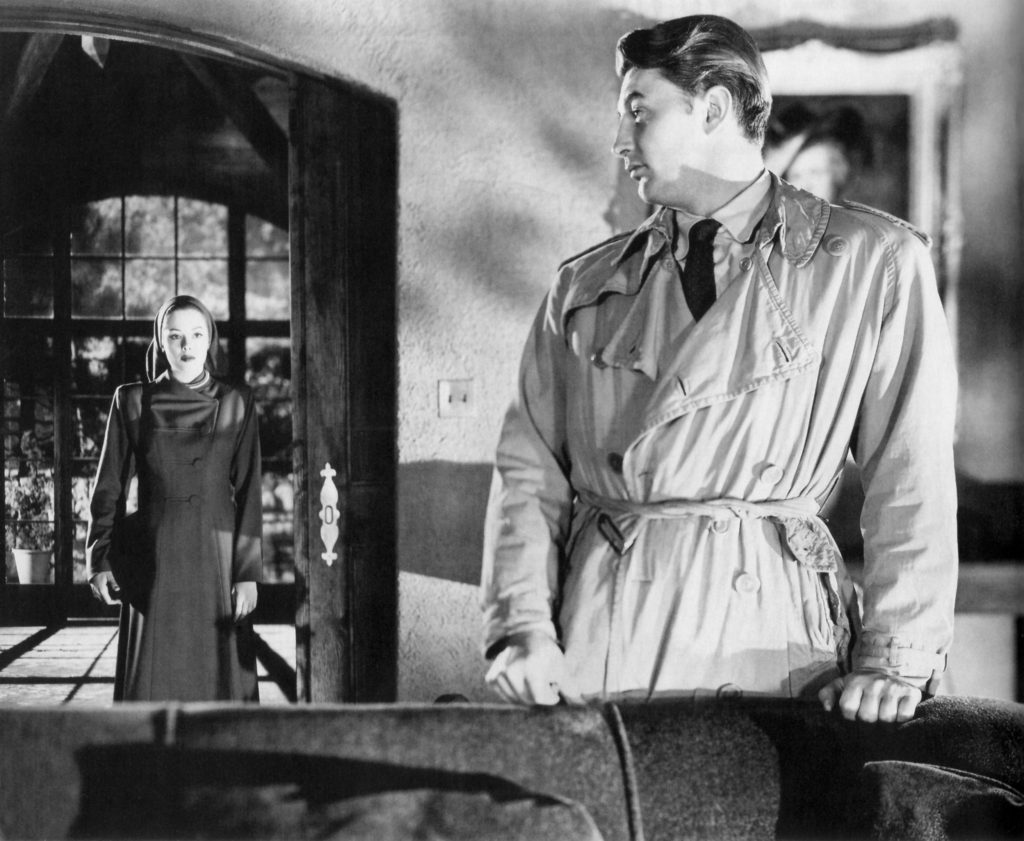
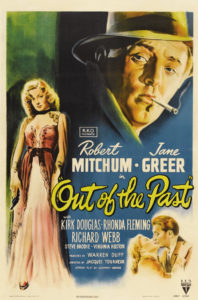
Film Noir is a genre that deals in a lot of dark emotions but in particular it deals in regret. Regret for paths not taken, regret for paths that were. Regret that you trusted the wrong people, regret that you endangered the ones closest to you. Out of the Past, Jacques Tourneur’s classic Noir from 1947, has regret baked into its very foundation. It’s protagonist (Noir never has a hero per se), Jeff Bailey (Robert Mitchum), has his dark and seedy past rear its ugly head when he thinks he’s put it well behind him. This leads to an extended flashback that showcases everything Bailey has to be regretful of. And brother, it’s a lot.
Back in the day, Bailey was a private investigator whose real name was Jeff Markham. He and his partner were hired to find the girlfriend of a man named Sterling, a gangster played by Kirk Douglas in one of his first feature roles. Sterling’s girl, Kathie (Jane Greer) shot him, stole $40,000, and fled the country. Sterling says he isn’t interested in the money, he just wants the girl back. Markham takes the job and tracks the girl to a dive bar in Mexico. There he falls in love with her and decides to run away with her after she denies she stole the money. If you don’t think things go wrong from there, you haven’t seen many Noirs.
Out of the Past is told mostly in flashback form. We first meet Markham when he is living as Jeff Bailey, running a gas station in a small town in the Sierra foothills. He’s tracked down by one of Sterling’s goons, and has to come clean to his present girlfriend about his past with Kathie while on a long drive to meet with Sterling. Markham thought he was through with those entanglements, but just when he thought he was out… Well, you know the rest.
Out of the Past is widely (and justly) recognized as one of the quintessential Films Noir. A big part of that is the film’s stylish tough-guy dialogue. As Kathie plays roulette, Markham tells her, “That’s not the way to win.” “There’s a way to win?” she asks. He tells her, “There’s a way to win more slowly.” Later, when Kathie tells Markham that she doesn’t want to die, he says, “Neither do I, baby, but if I have to I’m going to die last.” When confronted with the fact that if he doesn’t deal with the person that betrayed him, Markham will get the death penalty he retorts, “Build my gallows high, baby.” And it goes on, full of sharp, cutting lines that real gangsters and detectives could only wish they could conceive.
The screenplay was credited to Daniel Mainwaring (under the pseudonym Geoffrey Homes), who adapted his short novel Build My Gallows High. There were extensive revisions and rewrites, however, first by James M. Cain, and later Frank Fenton. According to an article from Film Comment magazine (Feb 1991) by Jeff Schwager, it was Fenton who supplied most of the iconic dialogue.
And nobody can deliver such dialogue as Robert Mitchum. When he tells someone that she’s “like a leaf that the wind blows from one gutter to another,” you know he can mean it, even as it’s obvious he’s attracted to her. Mitchum’s droll delivery can’t mask the emotional turmoil bubbling beneath his laconic surface. That’s what makes Douglas such a great foil for him. Douglas is charming and affable, but you can tell that he’s also a live wire and it’s dangerous to get too close to him.
The ending to Out of the Past is famously ambiguous. A character asks another whether Markham was really in love with Kathie the whole time. An answer is given. Whether or not the answer was true, or whether it was a lie to spare a lifetime of hurt and regret is a subject of debate. The trouble is, regret’s not an emotion easily escaped.
They Live by Night
DIRECTED BY NICHOLAS RAY/1948
by Jim Tudor
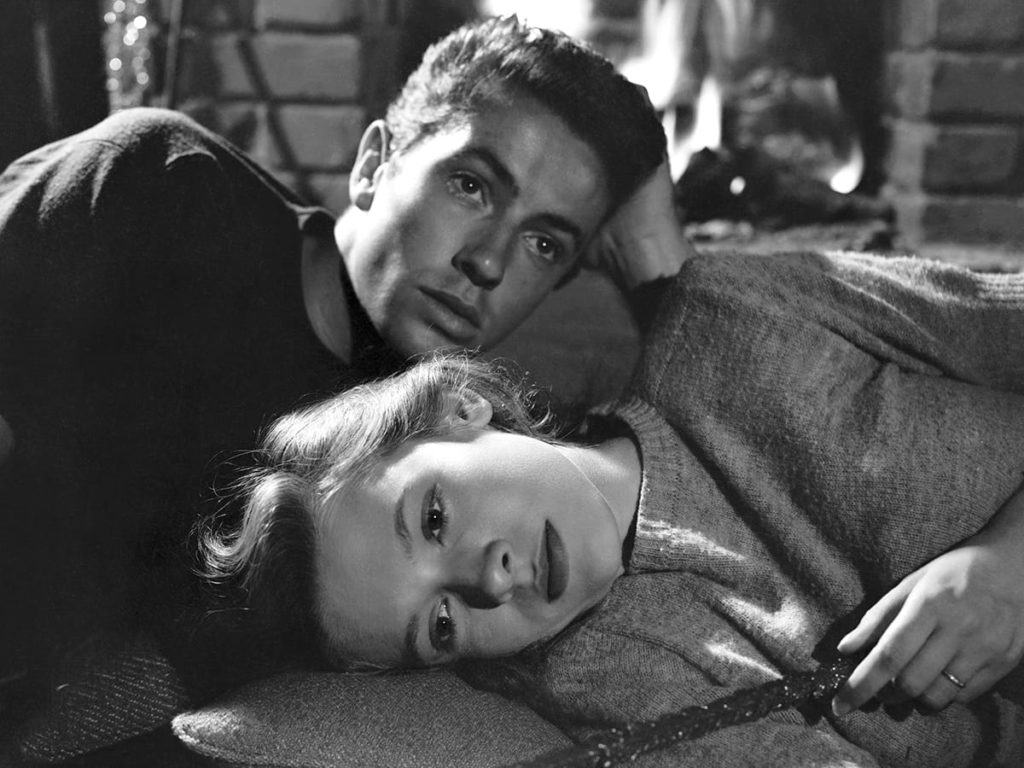
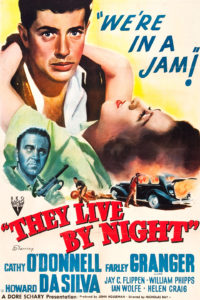
If the characters of Nicholas Ray’s first film live by night, then it’s also quite true that they work by day. When young Farley Granger and his uneasy company of crustier fellow thieves aren’t prowling the streets of Smalltown, U.S.A. casing banks, they’re robbing them. But don’t come looking for hold-up action in this crime flick. Before Joseph H. Lewis would boldly keep his camera in the getaway car while the robbery action went down off frame in his striped down Noir, Gun Crazy (1950), Ray was already doing a version of that (albeit much more briefly) with 1948’s They Live by Night.
Shot and shelved two years prior to its release, They Live by Night (not to be confused with John Carpenter’s sublime They Live or Ben Affleck’s thrill-a-minute yuk-fest, Live by Night) proves to be on the cutting edge of Film Noir’s late-1940s migration out of The Big City, and into other territory. Freshly sprung from the joint and already pulling bank jobs, Granger’s character Bowie soon finds that even rural postwar America is an insufficient hiding place when you’re a wanted man. It’s no time to fall in love, that much is certain.
So what does he do? You guessed it- he marries the first girl he sees. As the film’s opening prologue informs, he nor his naive bride (Keechie, played by top-billed Cathy O’Donnell) “were never properly introduced to the world we live in”. Per that set-up, it comes as no surprise that They Live by Night unfolds as a doomed romance rather than as a straight crime thriller. Bowie and Keechie spend much of the film as lovers on the run, riding buses from Wherever to Who-Knows-Where. But staying in a series of rundown motels isn’t much of a honeymoon, particularly when no matter how far they go, the walls are always closing in.
It’s this fatalistic inevitably that fuels They Live by Night as one of the great examples of classic Film Noir. Somehow, the drifting blank slates of Granger’s Bowie and O’Donnell’s Keechie are just right in this stark, traveling portrait of impersonal paranoia. Before these main characters can ever grow as people, they’re repeatedly pulled back into Bowie’s life of crime. Whether it be law enforcement or the cinder block-faced crew of old robbers who keep turning up, it only goes to show that the old adage about crime not paying has its truths… even as a flurry of legal tender literally spill from the car following one heist. Money may be no object for guys like Bowie. But love and death certainly are.
Murder by Contract
DIRECTED BY IRVING LERNER/1958
by Justin Mory
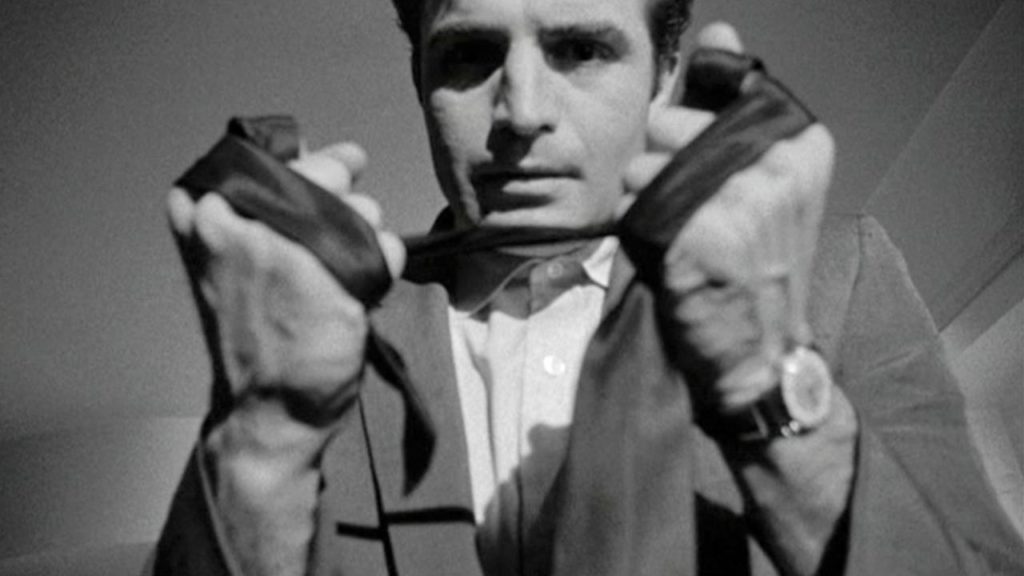
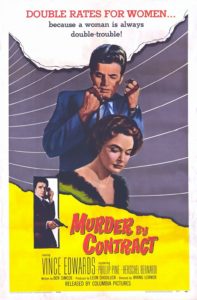
In Martin Scorsese’s 2009-recorded introduction to director Irving Lerner’s low-budget 1958 thriller Murder by Contract, included in the five-film Columbia Film Noir I DVD set, Scorsese reminisces that the 14-year-old buddies with whom he first saw the film, at the bottom bill of a double-feature with Anatole Litvak’s A-budget, Yul Brynner and Deborah Kerr-starring epic The Journey (1958), knew immediately that they were seeing something “different”. While those other kids might not have been able to or interested in articulating that difference, Murder by Contract stuck with Scorsese to the point that that its spare storyline and offbeat tone became a touchstone for the future director, the artistic juncture where, for him, European Art and American Independent filmmaking of the late 1950’s and early 1960’s showed unlikely affinities.
And that unusual, unexpected quality is apparent from its opening sequence, where an ambitious young man patiently waits in his one-room apartment for the phone call that will set him on his career of contract killing, to its last, where the now seasoned killer’s careful methodology is betrayed by an unforeseen variable. Unflappably cool Vince Edwards, best known as the earnest young doctor in the early ‘60s TV series Ben Casey, embodies that strange mixture of cautiousness and viciousness, willing to take a week-and-a-half-long tour of Southern California just to throw any possible surveillance off his tracks or pay a fired maid a C-note just to learn that her former employer likes to watch TV every morning. That these slow-building sequences have ferociously sudden and unexpectedly violent pay-offs make this Murder By Contract all the more shocking for coming out of the blasé rhythms of everyday life.
With its droning solo guitar score, linking the ceaseless flow of rigid schedules, ledger-marks, and set routines to throat-slittings, knife-gougings and remote explosions, the economy of means is clearly reflected in its economy of style. Murder is purely transactional, or “strictly business” as The Godfather (1972) would later have it, for our single-minded anti-hero, with one more tally on the account book bringing him ever-closer to his ultimate goal of that $28,000 house on the Ohio River, free and clear. Compressed to 81 minutes, the background blur of cheap motel rooms, endless car rides, line of storefronts, stretching golf courses, and steep cliffs overlooking exclusive beach property are all that stand between this uniquely American cipher and his uniquely American dream of affluence and leisure. If he is lucky and ruthless enough to grab it, that is.
Released in 1958, the year often cited as the endpoint for classic Film Noir both as a style and genre, Murder by Contract offers an interesting contrast with another famous Noir released that same year, Orson Welles’s Touch of Evil. With its baroque camerawork and extreme characterizations, the latter film plays as big and broad as Welles’s lumbering, slobbering, sweating Sgt. Hank Quinlan, while Vince Edward’s lean, sleek, focused Claude, or whatever his real name might be, acts front-and-center for Murder by Contract’s more tight, economical charms. Like the genre itself, laid disassembled and bare on the screen for less than six reels, romance, greed, self-deception, and all the other motivating factors of a decade-and-a-half of past Noirs are distilled to its purest essence of, quite simply, and starkly, murder for money.
Branded to Kill
DIRECTED BY SEIJUN SUZUKI/1967
by Paul Hibbard
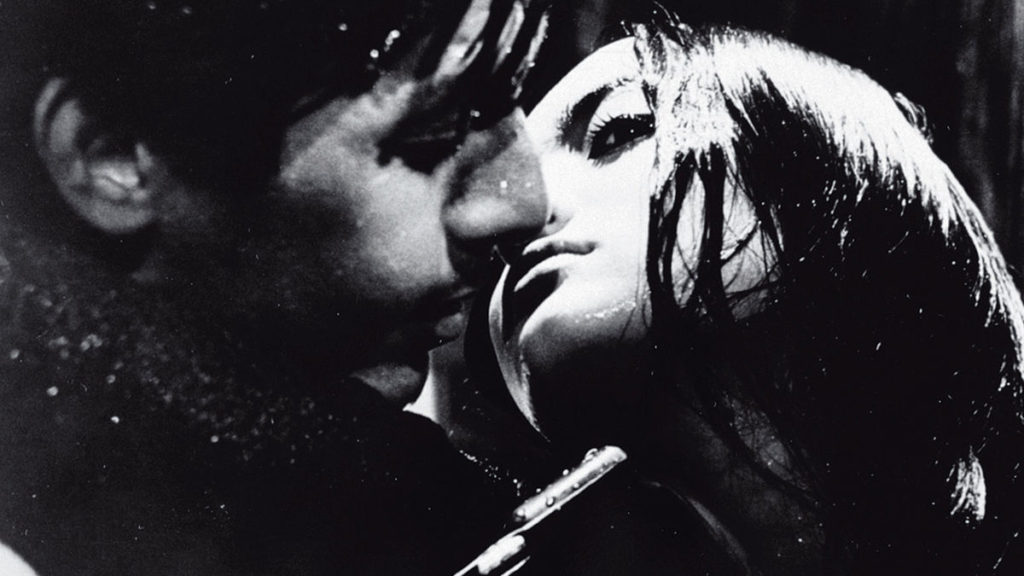
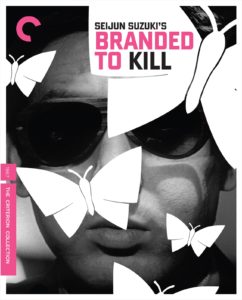
Seijun Suzuki’s Branded to Kill is to Noir what his Japanese successor Nobuhiko Obayashi’s House is to horror. This is cinema in the form of lucidity. Hanada is a hired killer, the number three killer in all of Japan, and though he would rather sniff rice than work his way up the ranks to number one, fate has other plans for him.
Hanada has chance after chance to prove himself, and he does, almost by falling upwards. A lot of this doesn’t make sense, and what does may feel silly in its symbolism, like the third act taking place in a literal boxing ring. But there’s a coolness and style to Suzuki’s style that is intoxicating. If your exposure to Japanese cinema is Kurosawa and Ozu, two vastly different filmmakers, I wouldn’t try to place Branded to Kill in the spectrum. This feels more like Bunuel, or Japan’s answer to Godard’s Pierrot Le Fou.


